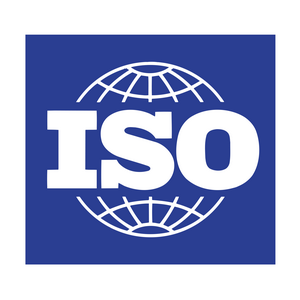he ISO 9000 series of standards consists
of two broad categories of standards : core standards and supplementary
guidance standards. We have to know about the structure of ISO 9000
standards.

Core standards
The five core standards are :
ISO 9000-1: 1994. Quality management and
quality assurance standards – Part 1 : regulations for selection and
use. This standard clarifies principal quality- related concepts and
provides guidance for the selection and use of the ISO 9000 family of standards for quality assurance and management.
ISO 9001 : 1994, Quality systems -help for quality assurance in development, design, installation, production and servicing.
ISO 9002 : 1994 , Quality systems – help for quality assurance in production, servicing and installation.
ISO 9004-1 : 1994 Quality management and
quality system elements – Part 1 : Guidelines. This standard is meant
for internal use by organizations and provides guidance in designing and
implementing a quality system. So that can meet their market needs and
achieve overall success.
It should be noted that the quality
assurance models set out in standards ISO 9001, ISO 9002 and ISO 9003
represent three distinct quality system requirements suitable for
two-party contractual purposes. These standards also form the basis for
third-party certification. Standard ISO 9004, on the other hand, is not
intended for contractual, regulatory or certification purposes.
Product and system standards
Since the concept of quality systems is
comparatively new, most people confuse ” product-quality standard” and
“quality-system-standard.
The product-quality standard specifies
various characteristics or parameters which the product must meet. If it
is to conform to the product standard. The basic principle in product
certification approves an manufacturer, through a license, to use the
prescribed certification stamp on a product.
The quality-system-standard specifies
the solution of managing quality in a company to make that products
focus to the quality level that it has set for itself. A company is
free to set any quality standard or level for its products on the basis
of marketing considerations and customer requirements.
A quality-system-standard assists the
company to plan and consistently manage the requisite product quality
standard. In a contractual situation, implementation of the ISO 9000
system will help the company clearly to understand customer
requirements. The operation of various functional departments will be so
managed to ensure that the final product or service fully meets
contractual requirements.
Since ISO 9000
defines a system for managing quality in generic terms. It applies
universally to all products and services. This standard is equally
relevant to companies manufacturing different types of product;
organizations in various service sectors such as hospitals, hotels and
airlines; and utilities providing power, water and telecommunications
services.
The standards can be used by companies employing a few persons as well as those work force runs into thousands. A company can
get third-party certification if it can demonstrate that in its
management of quality, it is following with all the relevant clauses of
one of the ISO standards : 9001, 9002 or 9003.
Benefits of ISO 9000 quality systems
ISO 9000 quality systems bring various
benefits to their users. The major purpose of an effective quality
system is to inspire confidence among customers in a contractual
situation. It is also of immense value to the suppliers themselves,
because it enables them to achieve customer satisfaction cost
effectively. If all tasks were carried out correctly the first time,
there would be no waste, costs would be minimized and profit maximized.
An effective quality system confers the following benefits on the
supplier:
It enables them to identify and plan tasks and their method of performance in order to yield the right results.
Provides the means for resolving and identifying problems and preventing their recurrence, thereby developing conformance.
It changes staff to manage their own
operations, thereby reducing fire-fighting and freeing managers from
constant intervention in business operations. This will help to create
quality awareness and job satisfaction among employees.
Provides a means for documenting the
company’s experience. This can serve as the basis for training staff and
thus for improving their performance.
It provides data that can be used to
determine the performance level of operating processes and products and
to effect improvements.
It generates objective evidence to
demonstrate the quality of products and the effectiveness of systems and
thus to build confidence among customers.
Quality systems
Implementing a quality system based on ISO 9000
can help transform an ad hoc method of quality control into an
organized and cost-effective quality-management system. By combining
high quality with low cost, this can give the company a tremendous
competitive advantage.
An ever-increasing number of companies
all over the world are implementing quality-system standards internally.
In addition, the bigger companies are insisting that their suppliers
implement certified quality systems. It is therefore imperative for
companies in developing countries to adopt quality systems based on ISO 9000.
This would greatly help in the improvement of their image, their
credibility and their acceptability in international markets, factors
essential for success in the export trade.
Reference link : http://www.solubilis.in/blog/structure-iso-9000-standards/
Comments
Post a Comment